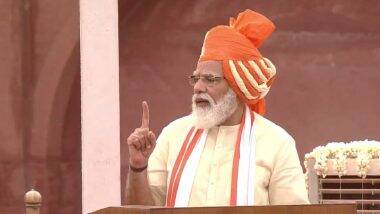Shivaji Sarkar
The call for Atmanirbhar Bharat has been given a new touch for “enhancing capacity, creativity and skills”. In his Independence Day speech, Prime Minister Modi made a pitch for a virtual halt to exports of critical raw materials and minerals.
Over the decades, economists have been raising the pitch for a vibrant self-reliant economy. Modi echoed the sentiment and suggested a reversal of the policy to import of raw material and export of value-added products to make India a manufacturing hub epitomising vocal for local, ‘Make in India’ and make for the world.
The conceptual change in the policy, if implemented, can create a manufacturing country that would not only meet its needs but also export enough to the world. This would create jobs, spare Indians with enough resources to sustain themselves and may even attract aspirants from across the world. The no-export policy of critical materials would help Indian manufacturers add more value to their products.
India, as Modi says, would eventually become a global hub. Many firms keen on relocating themselves may flock to India. So far, though, the hitch has been its tax system. So, two days before his I-Day speech, he announced a faceless tax transparency system that is expected to be more honest and hassle-free for the taxpayer.
At the same time, a debate is raging as to why Modi is trying to ensure a transparent tax system even as the number of taxpayers has shrunk by 55 per cent from 3.29 crore in 2018-19 to 1.46 crore in 2019-20, raising the taxable income limit to `5 lakh a year from `2.5 lakh in the interim Budget 2019-20. This led to 1.8 crore people having no tax liability, which was sensible.
Now, the question is why 1.46 crore people, the real middle class, is being tormented to pay tax at high rates? Even those senior citizens having no pension are being robbed off a huge chunk of their deposits due to interest accruals at measly rates of an average of 5 per cent a year. The tax on bank deposits is retrograde and no step has been taken to waive it.
In reality, the transparent system should have freed the bank deposits of TDS or any other tax payment. This is hurting India’s purchasing capacity and furthering a feeling of oppression. If someone needs to survive on his own savings, without a pension or any other support, any tax on the interest accrual, a mere hedging of his principal amount, is considered draconian.
There is a view that these small numbers of personal Income Tax payers need to be freed from paying taxes. It would not only help them but the government too, as expenses on collection could be saved. In 2019-20, there were 8,600 individuals who declared `5 crore taxable income and about 3.2 lakh who declared taxable income of over `5 lakh. In 2018-19, the net tax collection of both direct and indirect taxes saw a significant decline. In 2019-20, personal income tax is to contribute about 5.69 lakh crore. The figure could be actually less in 2021 as the economy has taken a hit due to Covid-19 lockdown.
The question is, for whom are these new set of transparency slated for? Apparently, for the new entities which are likely to enter the country for business. However, Modi would have done well if he were to have announced an end to personal income tax. This increases purchasing power, creates a healthy economy, boosts demand and larger collection of indirect taxes. In fact, the government achieves far more by ending the Income Tax and the ‘transparent’ system is primarily to help foreign and Indian businesses and reduces litigation.
Compared to this, the PM’s concept of Atmanirbhar Bharat of putting a cap on exports of raw materials and minerals is more beneficial. The country produces and works with about 100 minerals, which are an important source for earning foreign exchange as well as satisfying domestic needs. India exports iron ore, titanium, manganese, bauxite, granite, and imports cobalt, mercury, graphite etc.
By weight, coal and iron ore are the most extensively traded minerals. It has long been held that developing countries tend to export raw materials and import manufactures. India’s major mineral resources include coal (fourth largest reserves in the world), iron ore and manganese (seventh largest reserve), mica, bauxite (fifth largest reserve), chromite, natural gas, diamonds, limestone and thorium.
INFA

